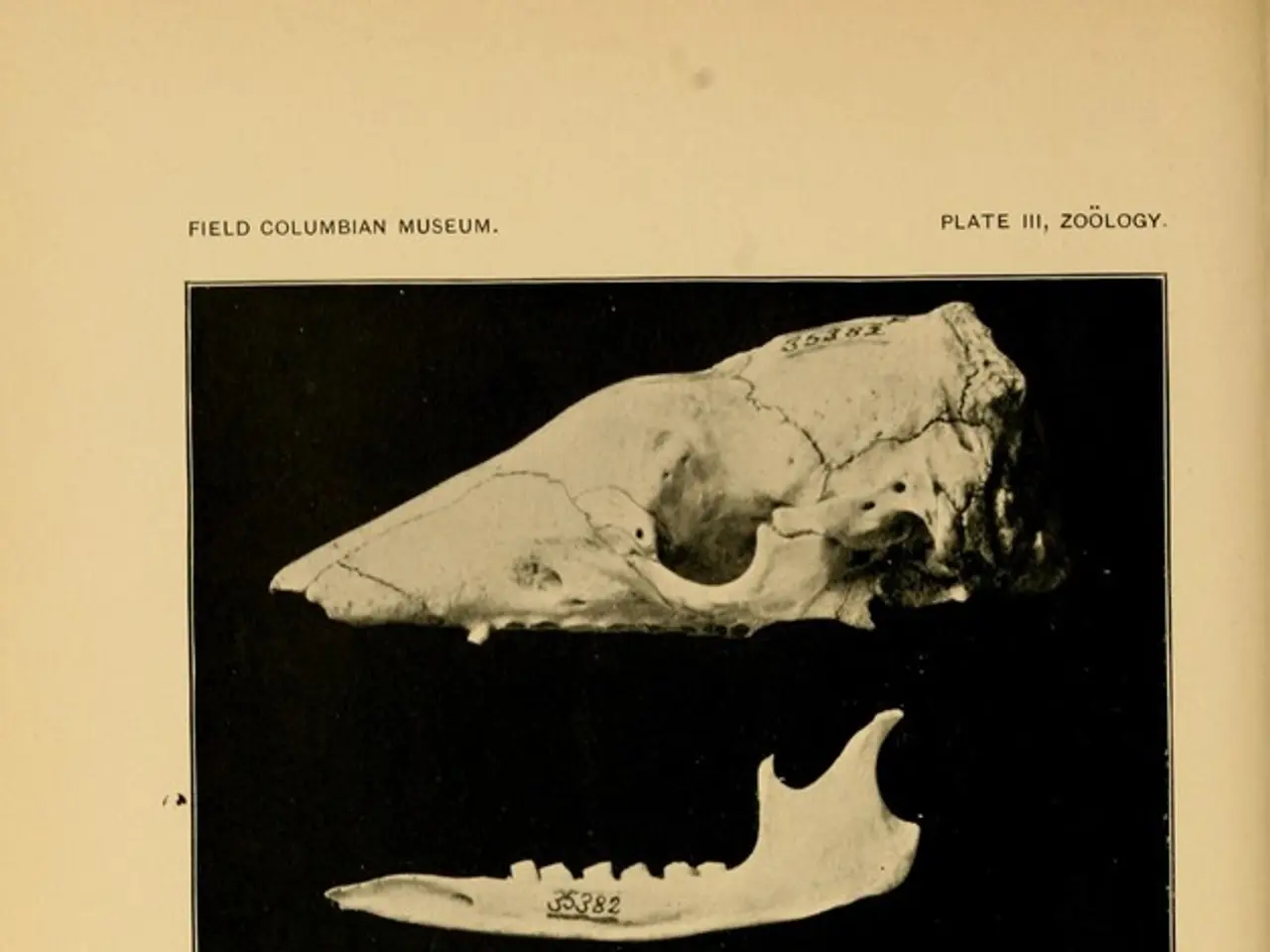Osteoporosis in the Elderly: Characteristics, Signs, Remedies, and Additional Insights
Senile osteoporosis, a type of primary osteoporosis that occurs with aging, can lead to fragile bones that break easily. The first sign of this condition may be a broken bone or vertebral fracture.
Preventing senile osteoporosis involves a combination of lifestyle modifications, nutritional optimization, physical activity, and medical oversight. Here are some key factors to consider:
- Nutrition: A diet rich in calcium and vitamin D is essential for maintaining bone health. Foods that contain these nutrients include dark green, leafy vegetables, broccoli, low-fat dairy products, sardines and salmon, and calcium-fortified foods and drinks. Certain foods also contain vitamin D, such as fatty fish and fish oils, egg yolks, liver, and vitamin D-fortified foods and drinks. If you're not getting enough vitamin D from your diet, a supplement may be necessary.
- Physical Activity: Regular weight-bearing exercises can improve bone health and reduce the risk of falling. Examples of weight-bearing exercises include walking, swimming, dancing, playing tennis, weight training, and climbing stairs. Getting enough quality sleep is also important for fall prevention.
- Lifestyle Factors: Avoiding smoking and excessive alcohol consumption can help prevent senile osteoporosis. Regular eye and hearing tests, blood pressure checks, and taking extra care when walking on wet or icy surfaces are also important for fall prevention.
- Medication: Certain medications may help or prevent bone loss in people with senile osteoporosis. Examples include bisphosphonates, calcitonin, hormone therapy, a parathyroid hormone analog, and a sclerostin inhibitor.
- Risk Factors: Certain medical conditions, such as endocrine conditions, gastrointestinal diseases, rheumatoid arthritis, some types of cancer, HIV, AIDS, anorexia nervosa, and the long-term use of certain drugs, can increase the risk of senile osteoporosis. Common risk factors also include aging, hormonal shifts during menopause, smaller body size, certain races, family history, diet low in calcium, vitamin D, or protein, and lifestyle factors like low physical activity, excessive alcohol consumption, and smoking.
If you suspect you may have senile osteoporosis, symptoms to watch for include severe back pain, height loss, and a change in posture. It's important to consult a healthcare professional if you experience any of these symptoms.
Preventive measures focus on modifying these risk factors, engaging in regular weight-bearing and muscle-strengthening exercises, ensuring adequate intake of calcium and vitamin D, avoiding smoking and limiting alcohol consumption, maintaining a healthy body weight, and implementing fall prevention strategies. Additionally, managing chronic diseases and reviewing medications that affect bone metabolism can help reduce the risk. Screening, especially for women over 65 and men over 70 with risk factors, allows for early detection and intervention.
In conclusion, preventing senile osteoporosis involves taking care of your overall health, maintaining a balanced diet, staying physically active, and seeking medical advice if you have concerns about your bone health.
- Nutrition plays a crucial role in bone health, requiring a diet rich in calcium and vitamin D.
- Foods rich in these nutrients include dark green, leafy vegetables, broccoli, low-fat dairy products, sardines, salmon, and calcium-fortified foods and drinks.
- Some foods contain vitamin D as well, such as fatty fish, fish oils, egg yolks, liver, and vitamin D-fortified foods.
- A supplement might be necessary if you're not getting enough vitamin D from your diet.
- Regular weight-bearing exercises can improve bone health and reduce the risk of falling.
- Examples of weight-bearing exercises are walking, swimming, dancing, playing tennis, weight training, and climbing stairs.
- Quality sleep is essential for fall prevention.
- Lifestyle factors like avoiding smoking and excessive alcohol consumption can help prevent senile osteoporosis.
- Regular eye and hearing tests, blood pressure checks, and taking extra care when walking on wet or icy surfaces are important for fall prevention.
- Certain medications may help or prevent bone loss in people with senile osteoporosis.
- Examples of these medications include bisphosphonates, calcitonin, hormone therapy, a parathyroid hormone analog, and a sclerostin inhibitor.
- Several medical conditions increase the risk of senile osteoporosis.
- Examples of these conditions are endocrine conditions, gastrointestinal diseases, rheumatoid arthritis, some types of cancer, HIV, AIDS, anorexia nervosa, and the long-term use of certain drugs.
- Other common risk factors include aging, hormonal shifts during menopause, smaller body size, certain races, family history, diet low in calcium, vitamin D, or protein, and lifestyle factors like low physical activity, excessive alcohol consumption, and smoking.
- Symptoms to watch for include severe back pain, height loss, and a change in posture.
- Consult a healthcare professional if you experience any of these symptoms.
- Preventive measures focus on modifying these risk factors.
- Regular weight-bearing and muscle-strengthening exercises are essential.
- Adequate intake of calcium and vitamin D is critical.
- Avoiding smoking and limiting alcohol consumption is necessary.
- Maintaining a healthy body weight is important.
- Implementing fall prevention strategies is essential.
- Managing chronic diseases is key to reducing the risk.
- Reviewing medications that affect bone metabolism is crucial.
- Screening, especially for women over 65 and men over 70 with risk factors, allows for early detection and intervention.26.Health and wellness extend beyond bone health, encompassing sexual, mental, eye, and skin health.
- Improving health also means considering industries like renewable energy and manufacturing.
- Men's health topics such as mental, sexual, and skin care are important to discuss.
- Topics like wearables, smart home devices, cybersecurity, and lifestyle are relevant in today's digital age.
- Outdoor living, automotive, small business, investing, wealth management, home and garden, home improvement, and real estate must be considered for comprehensive health and wellness.




